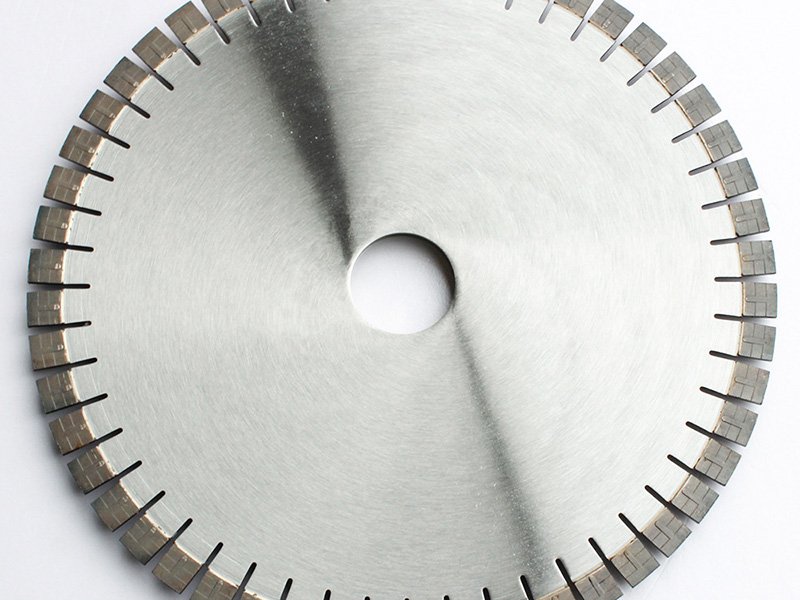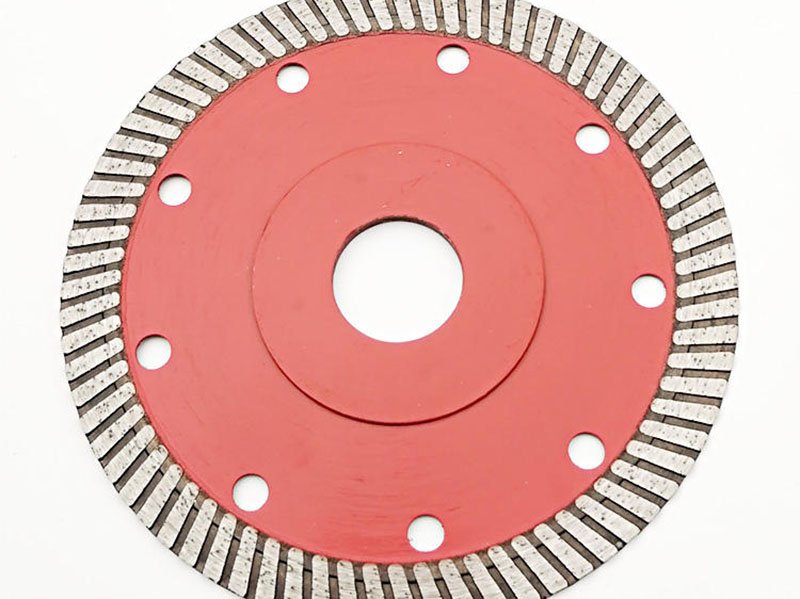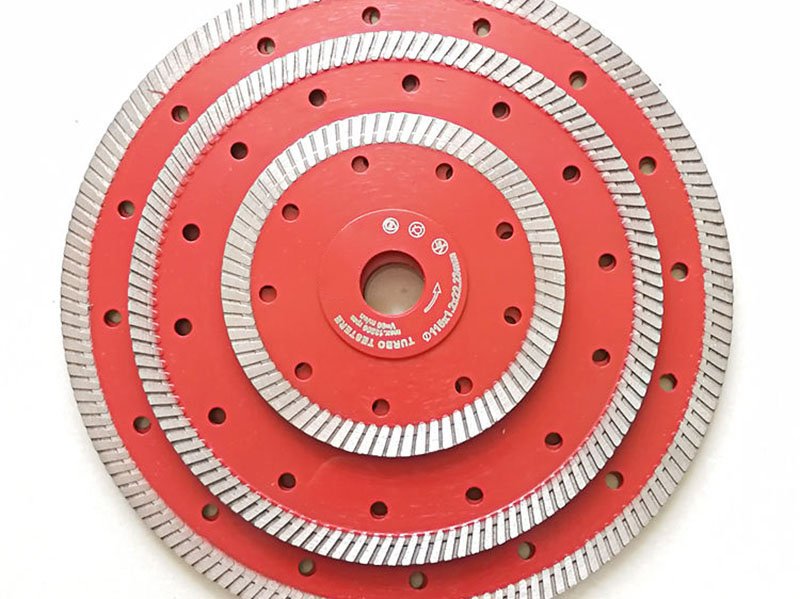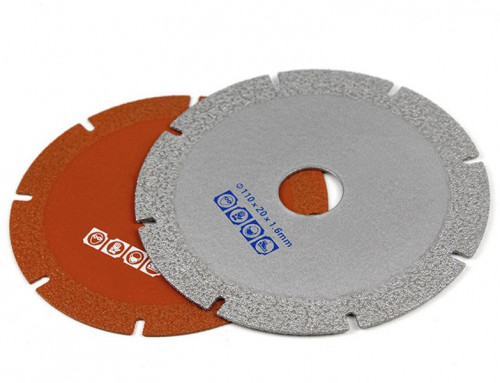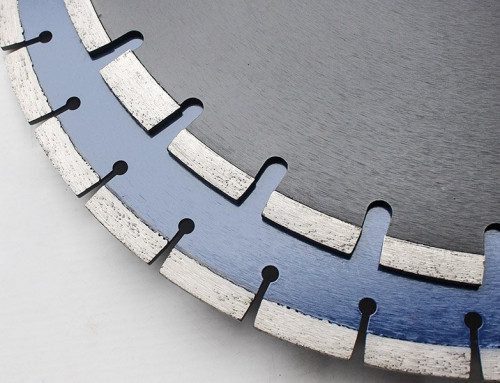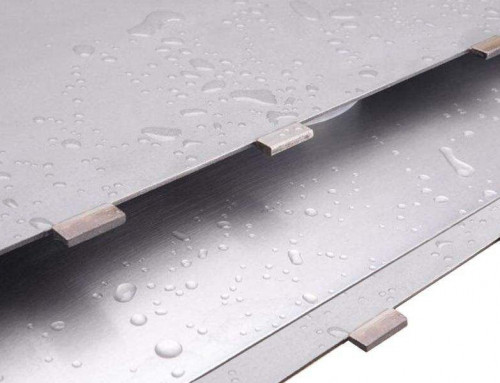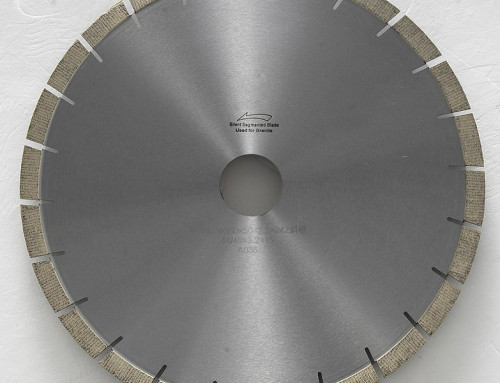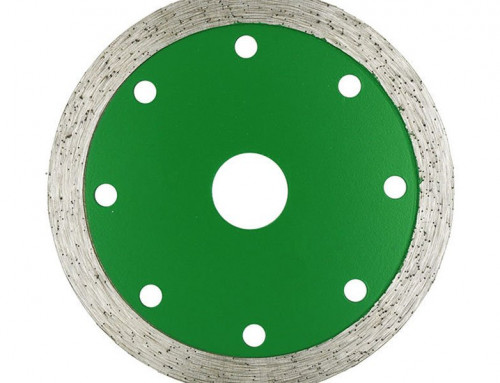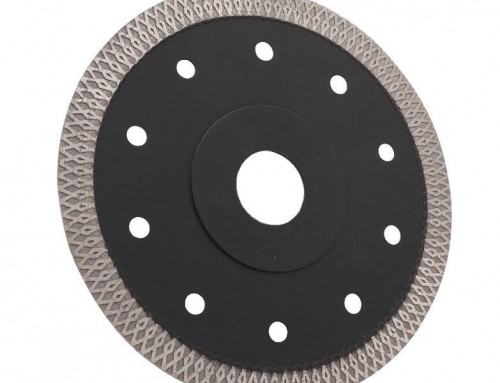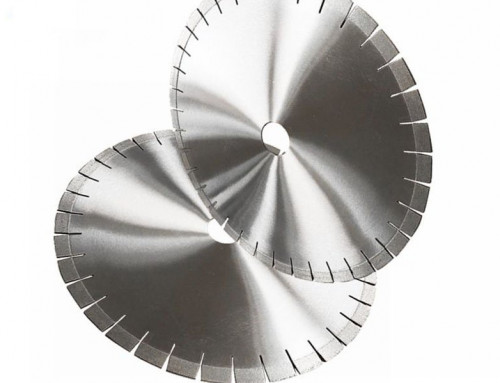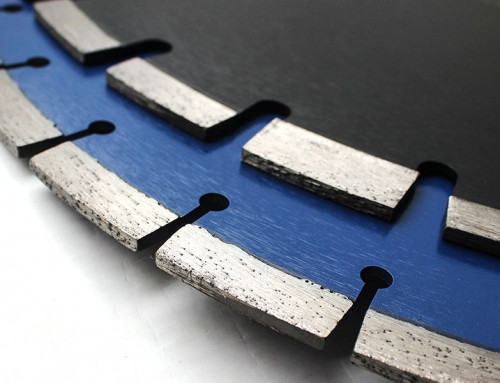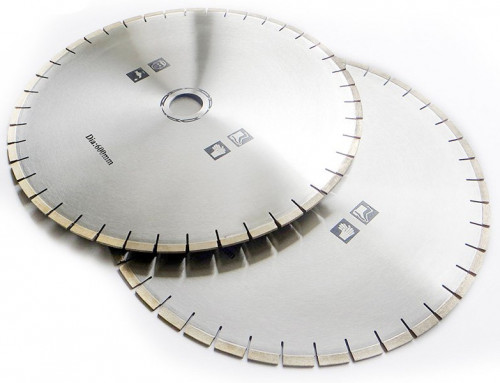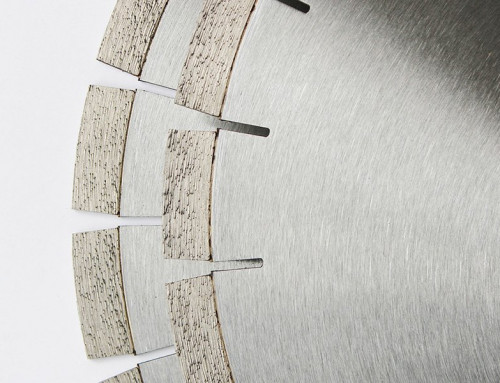Best Diamond Saw Blade for Cutting Quartz Countertop Slabs
Best Diamond Saw Blade for Cutting Quartz Countertop Slabs can be supplied by Eonyx, which is the leading manufacturer of diamond saw blades. Our sophisticated factory can supply 20,000 pieces of saw blades per month. As a professional supplier, we can guarantee competitive wholesale price and stable quality.
Sizes of Diamond Saw Blade for Cutting Quartz Countertop Slabs
The regular diameters of diamond saw blades range from 100mm to 3500mm. Among them, the popular sizes are: 2 inch, 3 inch, 3 3/8 inch, 4 inch, 4 3/8 inch, 4 1/2 inch, 5 inch, 5 3/8 inch, 5 1/2 inch, 6 inch, 6 1/2 inch, 7 inch, 7 1/4 inch, 7 1/2 inch, 8 inch, 8 1/4 inch, 9 inch, 10 inch, 12 inch, 14 inch, 16 inch, 18 inch, 20 inch, 24 inch, 26 inch, 30 inch, 36 inch, etc. (110mm, 160mm, 165mm, 255mm, 300mm, 350mm, 400mm, 3m, etc.)
Saw Blades Processing Process
We have been focusing on the technical development and production of diamond tools for more than 28 years.
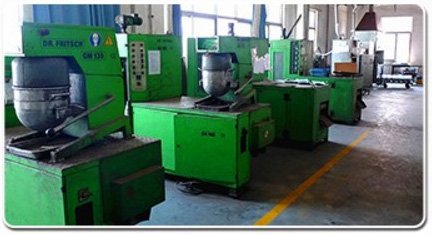
1. Powder Milling
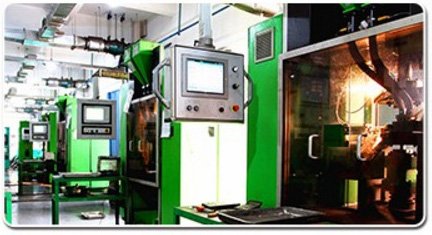
2. Segment Pressing
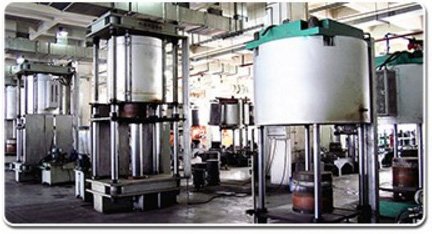
3. Segment Sintering
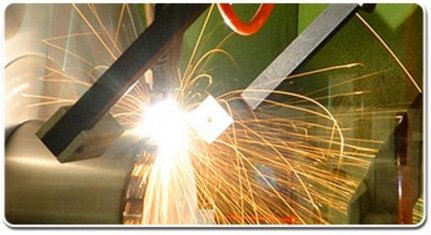
4. Segment Welding

5. Welding Strength Inspection
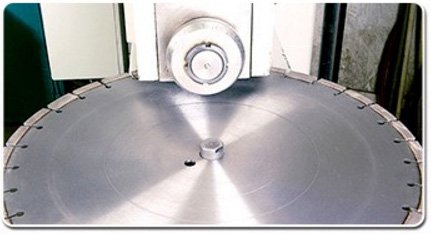
6. Stress Release Rolling
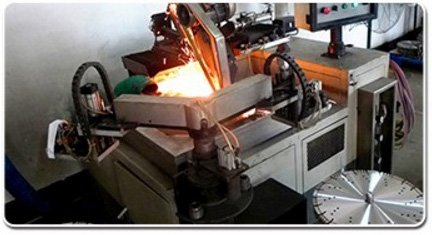
7. Blade Polishing
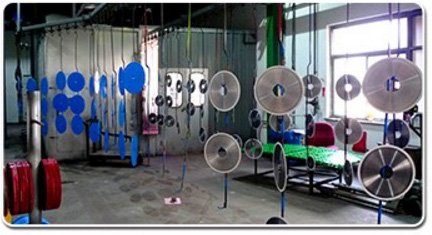
8. Blade Painting
Quality Inspection
Excellent product quality is our commitment to customers as always.
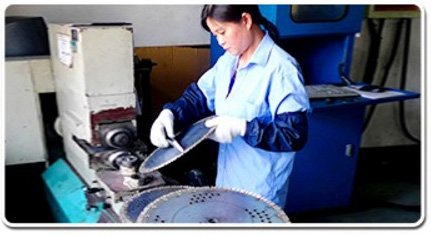
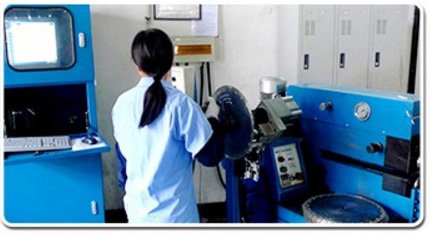

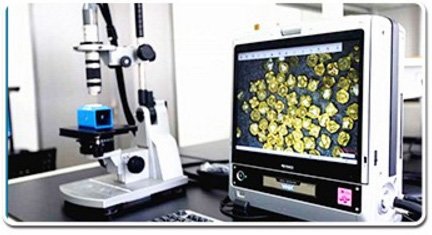
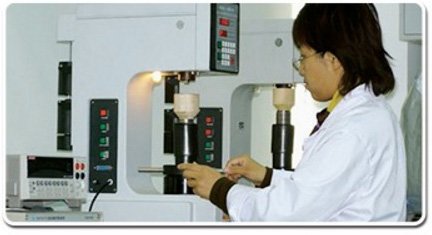
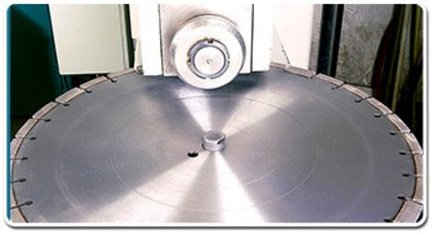
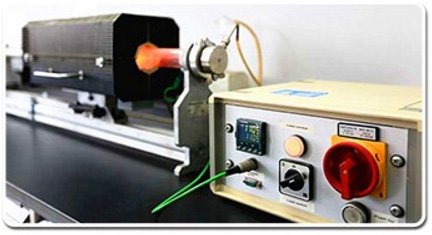
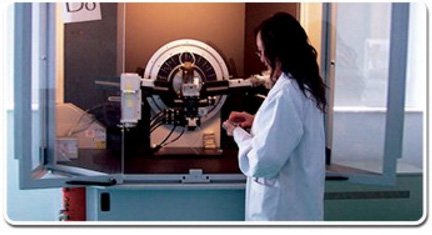
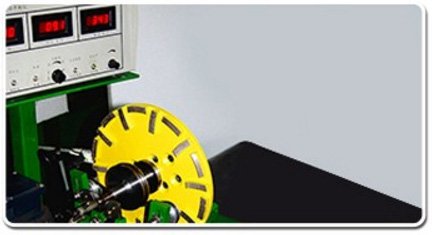
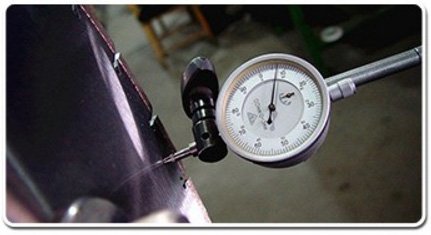
Substrate material of diamond saw blade for cutting quartz
The matrix of the diamond saw blade for cutting quartz slabs is generally 65Mn, T12 and other steels whose mechanical properties are not lower than 65Mn steel. Its processing requirements have two requirements: dimensional accuracy and shape and position accuracy. Dimensional accuracy requirements include: outer diameter, inner diameter, thickness, nozzle, gear table. Geometric accuracy includes: roundness, concentricity, perpendicularity, parallelism, radial runout, and end face yaw. The maximum allowable value of the surface roughness of the steel plate is R3.2μm, and its hardness is HRC37~42. The radial runout tolerance of the outer circumference of the base to the inner hole and the end face runout tolerance δ of the two sides of the base facing the inner hole meet the specific requirements of various saw blades in the previous section.
With the development of technology, new diamond saw blades for cutting quartz countertop have been continuously developed. Among them, the low-noise saw blade is one of the research hotspots. When the diamond saw blade is cutting quartz table tops and slabs, due to the mutual friction and impact with the workpiece to be processed, the substrate vibrates violently, and the noise intensity reaches 100~110dB, which greatly exceeds the 80~85dB required by the national noise hygiene standards. In order to reduce noise, many foreign manufacturers and research institutions have begun to research and produce low-noise saw blades for cutting quartz countertop. There are two main ways to develop low-noise diamond saw blades: one is to change the structure of the substrate, use a laser to process specific grooves on the substrate, and fill the grooves with damping forest material; the other is to divide the substrate into three layers. , the middle layer adopts damping material.
Structural parameters of segments of diamond saw blades
The selection of structural parameters of diamond segments is a key issue, which directly affects the efficiency and life of diamond saw blades for cutting quartz countertop, and must be selected reasonably in combination with the conditions of use. Segment structure parameters include diamond grade, diamond size and concentration.
Diamond Grade
Diamond grade is an important indicator to ensure cutting performance. If the strength is too high, the crystal will not be easily broken, the abrasive particles will be polished during use, and the sharpness will decrease, resulting in the deterioration of the attack performance. When the diamond strength is not enough, it is easy to break after being impacted, and it is difficult to take on the heavy responsibility of cutting quartz. The saw blade is generally made of diamond with a strength of 1.3~1.4MPa. The diamond used in the production of saw blades requires high strength, toughness and heat resistance, weak magnetic properties, few impurities, regular shape, few defects in the finished product, and high transparency. The processing of large quartz saw blades with high hardness, high wear resistance and high quartz content, medium-sized saw blades for processing high quartz content reinforced concrete, and small dry-cutting saw blades have high requirements for the above-mentioned diamond properties. The above-mentioned diamond performance requirements are lower.
Saw blade diamond size
When the diamond grain size is coarse and single grain size, the saw blade segments are sharp and the sawing efficiency is high, but the bending strength of the diamond segments decreases; when the diamond grain size is fine or coarse and fine grained, the saw blade segments have high durability but low efficiency . The diamond particle size can be selected according to the processing material, and the more difficult the sawing material is, the finer the diamond particle size is.
The particle size of the diamond affects the cutting value and cutting rate of the diamond. It can be seen that when sawing concrete, for the cutting rate of 200cm/min and 800cm/min, the edge value of diamond was 12% and 16% of its particle size respectively; when cutting quartz countertop, when the cutting rate was 300cm/min, The edge of the diamond is about 8% of the particle size; it can be seen that in order to improve the sawing efficiency, it is more beneficial to choose a coarser diamond. When using finer-grained diamond, it is required to increase the linear speed of the saw blade. When the diamond concentration is constant, the use of finer-grained diamond can increase the number of cutting points on the working end face of the saw blade, which is beneficial to improve the service life of the saw blade.
Diamond Concentration
The diamond concentration has a suitable range, usually 25%~75%. As the diamond concentration increases, the life of the saw blade increases accordingly. As the diamond concentration increases, so does the power consumption.
Inventory and Packaging
Sufficient inventory to ensure delivery and professional packaging to ensure safe transportation. Inner packaging: diamond saw blades are covered by anti-rust paint and plastic, then packed in paper box. Outer packaging is according to the shipping method, if by air, we recommend carton which could reduce weight; if by sea, we recommend crate which is seaworthy. Other packaging is also available upon your request.
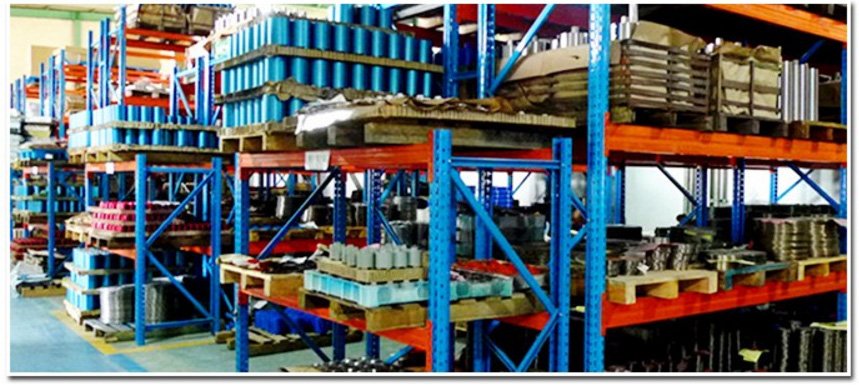

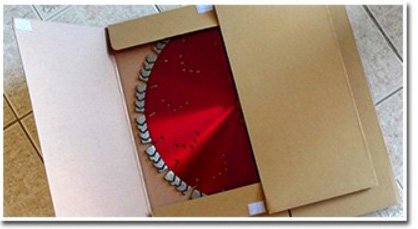

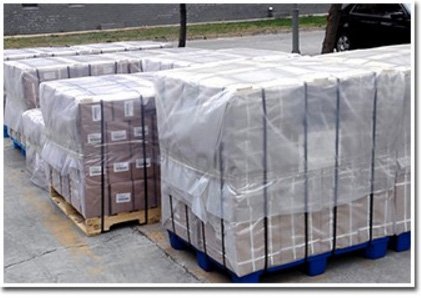
Application of Diamond Cutting Blades
For multi blade cutter, gang saw blade, bridge cutting machine, single arm cutting machine, manual handing machine, able cutting machine, etc. Designed for various hardness stone (soft, medium hard and very hard stones) cutting: granite, marble, sandstone, onyx, limestone, travertine, quartz stone, artificial stone, andesite, volcanic, lava stone, basalt, microcrystal stone, blue stone, dolomite and construction materials (concrete, tile, ceramic, asphalt, floor) to reduce segment cost and increase cutting efficiency.
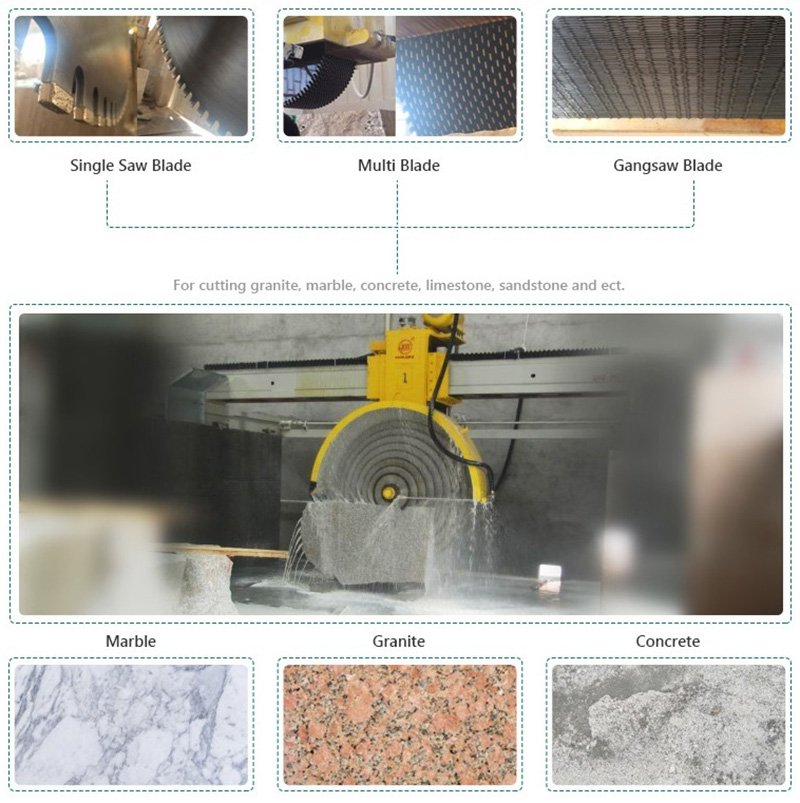
Segments matrix system for diamond saw blades for cutting quartz
Generally, it is divided into four categories according to the alloy type of binder, namely bronze binder, cobalt-based binder, tungsten-based binder and iron-based binder. Among them, the most widely used is the bronze bond.
(1) Bronze bond.
Such binders include copper-based, bronze, brass, drill bronze, drill brass, etc., with copper as the main component, and may also contain Zn, Co, NiFe and other metals at the same time or in part. Copper-based binder has low sintering temperature, low hardness, low strength, high toughness, moderate bonding strength with diamond (poor wettability and chemical affinity, weak mechanical holding force) and low price. Scope of application: It should be matched with diamond with good sharpness, and marble, soft granite, etc. are the main sawing objects.
(2) Drill-based binder.
The diamond-based bond is mainly composed of diamond, with an appropriate amount of copper, and a small amount of Ni, Sn, Zn and other components are often added. This kind of binder has moderate sintering temperature, moderate hardness, moderate strength, moderate toughness, good self-sharpening, stable performance, easy and expensive domestic price, and wide application range. It can be matched with medium-strength and high-strength diamonds and is widely used In cutting saw blades for granite and marble.
(3) Tungsten-based binder.
Tungsten-based binders are used in the form of WCWC or W powder. With appropriate amount of CuSn, ZnFeCo, Ni and other ingredients. This type of tungsten-based bond has the highest hardness and the worst self-sharpening. It has a certain chemical effect on diamond. The sintering temperature is also the highest. Therefore, high heat-resistant diamond is required to be matched with it. It is suitable for sawing quartz countertops and quartz slabs with high hardness, high wear resistance and high quartz content, especially suitable for processing difficult-to-machine materials such as high quartz content granite and reinforced concrete.
(4) Iron-based binders.
Iron-based binders use iron as the main component, and are used in combination with appropriate amounts of copper and nickel, and Sn, Zn, Co and other components are often added. The mechanical properties of this type of bond, such as hardness and strength, are similar to those of cobalt-based bonds, the toughness and self-sharpening are slightly worse than those of cobalt, and the chemical effect on diamond is more pronounced than that of diamond. The properties of iron-based binders will change a lot with the changes of alloy formulation and sintering temperature and other process conditions. The effect of diamond content in iron-based binder on the mechanical properties of the matrix. With the increase of diamond content, the hardness of the matrix gradually decreases, while the flexural strength gradually increases. As the diamond content increases, the bond strength between the binder and the diamond increases. There is an increasing trend.
This trend is more obvious if the diamond surface is titanium-coated. The performance of iron-based binder is not stable enough, and the price is the lowest. Basically the same as the cobalt-based bond, the iron-based bond can be used instead of the cobalt-based bond. Certain iron-based bonds outlast drill-based bonds when machining red granite. Suitable iron-based formulation segments also have excellent performance when processing black granite. If the segment formula or sintering process of the saw blade is improper, the segments will not be sharp when processing soft stone.
Selection of binder for saw blades for cutting quartz
The conditions for diamond saw blades to cut quartz are much better than that for drill bits to break the rock at the bottom of the hole. First of all, the power transmission of the diamond saw blade is simple and reliable, and the linear speed of the saw blade is more than ten times higher than that of the drill bit, so the saw blade works relatively smoothly; secondly, the quartz powder generated during the sawing process is easy to remove and clean, and the cooling of the saw blade The effect is good; thirdly, the diamonds on the segments work in contact with the quartz slabs periodically and intermittently. As mentioned above, the matrix performance index of the saw blade for cutting quartz countertop is lower than that of the drill bit, and a reasonable choice should be made according to the type of stone.
In terms of wear resistance, tungsten carbide-based binders are the most wear-resistant and have the highest hardness. The bronze base is the softest and least wear-resistant. Hardness and wear resistance are proportional. Cobalt-based binder is the most widely used, and its hardness, wear resistance and cutting efficiency are relatively moderate. The hardness and wear resistance of the binder can be adjusted by adjusting the content of cobalt base and the proportion of other low melting point metals, so as to adapt to the cutting process of quartz countertops.
The binder is selected according to the processing of different stones. When used to process soft marble, use bronze bond with hardness >88HRB. High diamond or pure cobalt binder is used when processing hard stone such as quartz countertops and slabs, and its hardness ranges from 88 to 108HRB. When used for cutting reinforced concrete, etc., a tungsten carbide-based binder is used, and its hardness ranges from 40 to 45HRC. The hardness of the bond is an important indicator of diamond segments, and it is also an important physical quantity to measure the performance and process stability of the bond in the production process. Due to the different composition and proportion of each binder, the forming density, pressure and sintering conditions are different, and the hardness of the carcass obtained is also different. The hardness of the diamond matrix should correspond to the hardness of the quartz being processed.
Contact Us
If you’re interested in Best Diamond Saw Blade for Cutting Quartz Countertop Slabs, please feel free to contact us, (E-mail: [email protected] Phone/WhatsApp: 0086-15805032000 or filling out the form below) we will keep providing quality products and excellent service for you.


